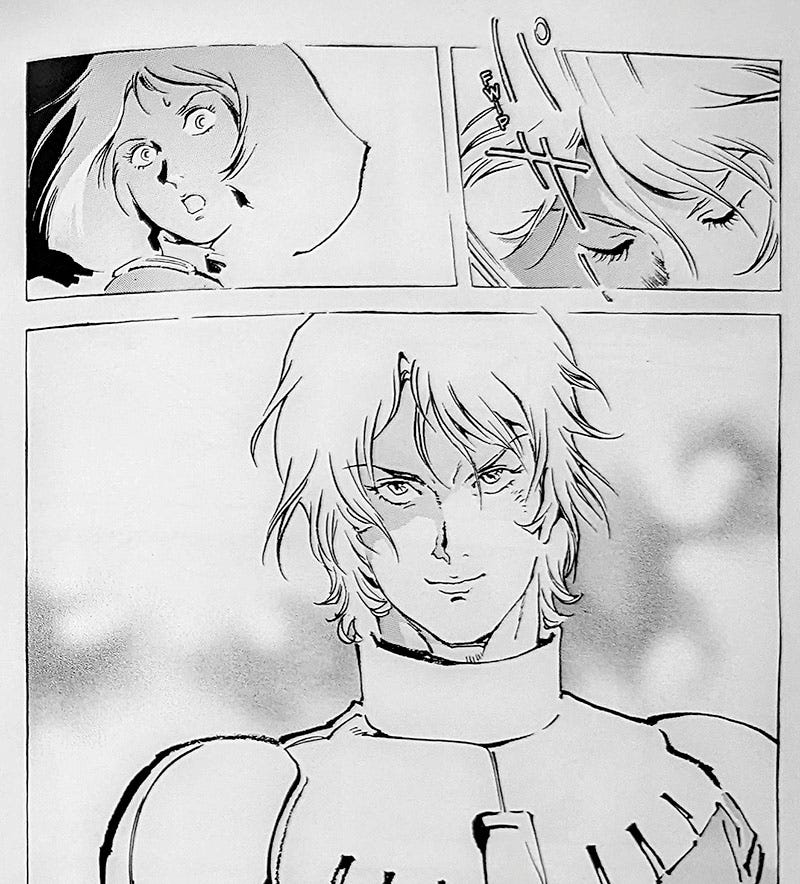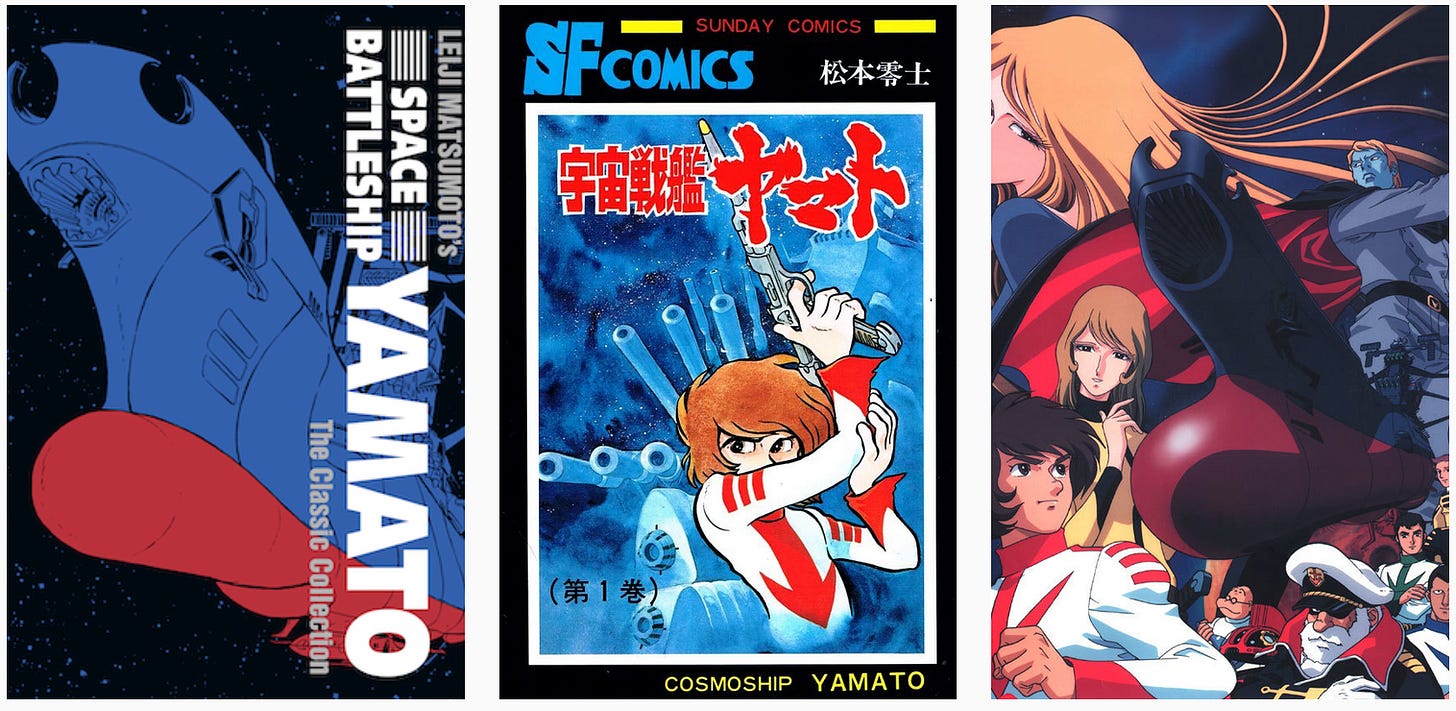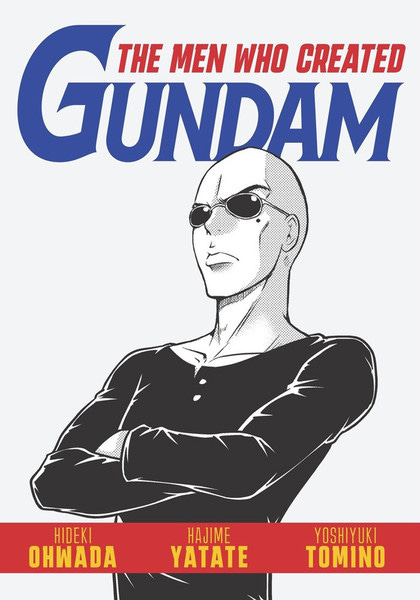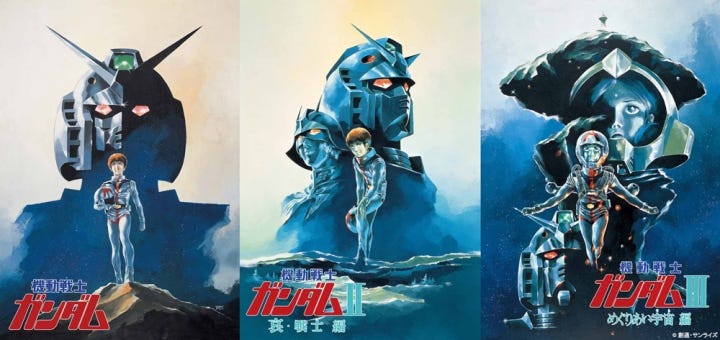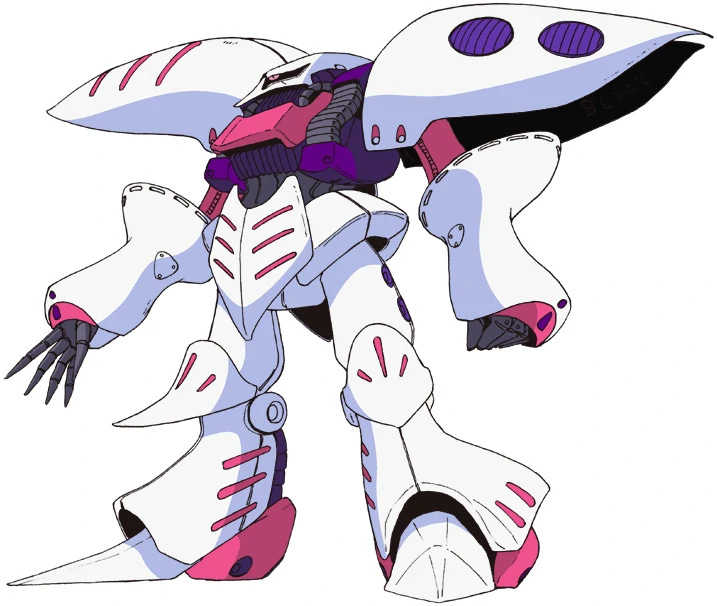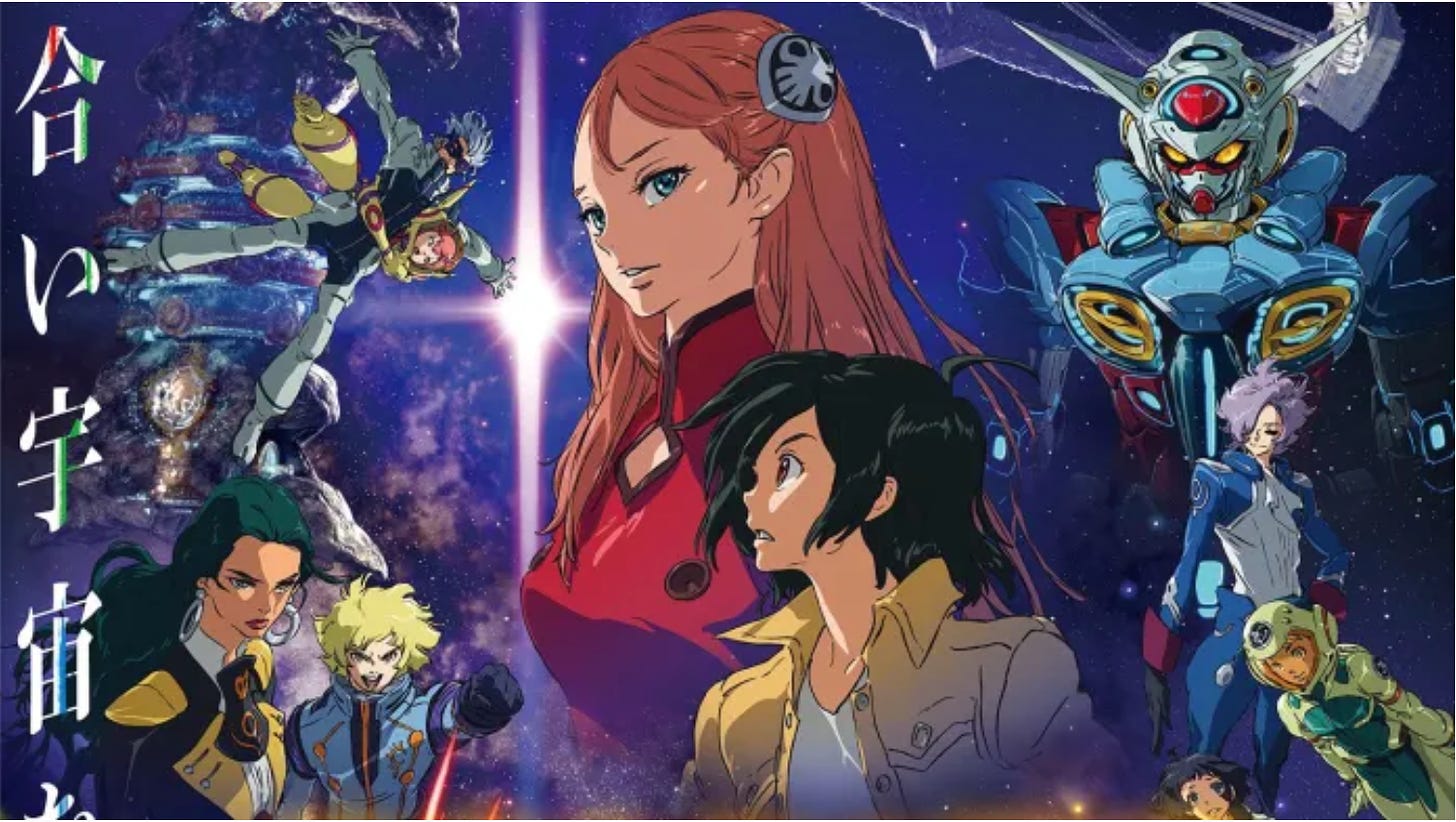PODCAST: Ep. 53 - Conversation with Emma Rios
David Brothers' extended conversation with comics creator and fellow Gundam fan Emma Rios
Check it out! It's a special-edition, remastered, upgraded re-release with bonus material episode of Mangasplaining! As a special bonus this week, we bring you David Brothers' complete interview with Emma Ríos! They talk about Gundam (a LOT!), plus talk about comics and movies and life. It's a nice time, check it out!
Listen and Subscribe to the Podcast:
Google | Apple | Stitcher | RedCircle | Amazon | Radio Public | PocketCast | Spotify
Mangasplaining: Listen to Me! With Emma Ríos Conducted by David Brothers, with show notes by David Brothers too!
Hello and welcome to Mangasplaining, the show where we recommend great manga to folks who haven't read much manga before! Hosted by Deb Aoki, Christopher Woodrow-Butcher, Chip Zdarsky, and myself, David Brothers!
[David:] This week is something different! A while back on our Gundam: The Origin episode, we ran a short interview with friend of the show Emma Ríos on what makes Gundam click for her. In the interest of doing a little more Gundam-splaining and to allow us to take a break between seasons, we're going to run the full interview with Emma! She introduced me to Zeta Gundam and Reconguista in G, two very different series with a lot of heart. If you're curious where to start with Gundam, try those, or maybe 08th MS Team! Emma does a great job of explaining the appeal of Gundam from a variety of angles.
The first twenty-ish minutes of this conversation ran on our Gundam: The Origin Volume 1 episode, so you've heard it before, but the back half? That's all new!
Thank you again to Emma Ríos, and please seek out her work in Mirror, I.D., Pretty Deadly, and more.
Born in Spain and now creating work for both the American and European markets, Emma Ríos is best known to Western comics fans for her work on Mirror (with Malaysian artist Hwei Lim), Pretty Deadly (with Kelly Sue DeConnick), and I.D., all published by Image Comics. Ríos also worked on titles like Hexed for BOOM, and Doctor Strange and Runaways for Marvel. You can find her on Twitter. https://twitter.com/emmartian
4:00 The first Gundam Emma saw was Gundam 0079, also known as First Gundam, also known as Mobile Suit Gundam!
[Deb:] The Gundam anime series are now streaming on Netflix!
6:00 Gundam Wing was the introduction to Gundam for a lot of the west, thanks in no small part to Cartoon Network. The series featured pretty boys, incredible robots, and righteous violence. In what may or may not be a sharp contrast to First Gundam, the characters were a bit less ambivalent about violence than our beloved soft boy Amuro Ray.
7:00 Char is…a handsome . Here’s proof:
8:00 Emma mentions that Char is capable of evil, an aspect of his character that was featured to great effect in Mobile Suit Gundam: Char’s Counter Attack, the final confrontation between him and Amuro Ray. You can see another side of Char in Zeta Gundam, the sequel series to First Gundam. In it, Char is masquerading as Quattro Bajeena and fighting on the side of the angels. People frequently saw straight through his disguise on account of…the Char of it all.
8:35 “Power corrupts” is a great phrase, and the full quote from Lord Acton is a fun one to mull over: “Power tends to corrupt, and absolute power corrupts absolutely. Great men are almost always bad men, even when they exercise influence and not authority, still more when you superadd the tendency or the certainty of corruption by authority.” He was in a conversation about the history of the Inquisition, which was (to say the least) a period of time when a lot of holy people did a lot of sinful deeds. If a Pope can’t hack it, what chance does a handsome devil like Char have?
9:15 Amuro Ray and Kamille Bidan are the main characters of First Gundam and Zeta Gundam respectively. Like Amuro, Kamille has no interest in fighting, and in fact, is made to pay the price for the sins of the adults who command and associate with him several times. Bright Noa is present in both series, a rookie in the first and a seasoned veteran in the second. He doesn’t provide a moral compass so much as a sign of how even nominally good men are capable of making bad or ruthless decisions.
9:35 If you haven’t seen Neon Genesis Evangelion or Gundam, the most obvious similarity may be that they both feature extremely cool-looking giant robots. But the real fun is where creator Hideaki Anno brings his Gundam influence to bear, resulting in a cast of characters who mostly absolutely do not want to be where they are or doing what they do. Compare Bright Noa and Misato Katsuragi’s semi-parental roles with Amuro Ray and Shinji Ikari, for instance.
10:30 If you don’t watch westerns, boy, have we got a cool thing for you. In 1966, Sergio Corbucci wrote and co-directed Django, starring Franco Nero. In addition to being incredibly violent, it’s very much a product of its time… and also one of the best spaghetti westerns ever made.
Django walks around dragging a coffin behind him, which is what put David in mind of the Full Armor Gundam from Gundam Thunderbolt, who uses coffin-like shields for protection. Django has a fantastic final scene and a killer score. Even if you don’t like westerns, give the main theme by Louis Bacalov a spin.
12:00 David mentions that Emma and Sarah Horrocks are probably the biggest Gundam fan friends he has. Sarah makes comics too, and they come highly recommended. Check them out here: https://mercurialblonde.squaresp
12:30 NHK made a documentary named Making Gundam: The Inside Story, digging deep into the history and evolution of the show. It’s not currently available legally, but it shows up on the official NHK YouTube channel or website on occasion! You can read a bit about it here, on Otaquest: https://www.otaquest.com/mobile-suit-gundam-documentary-nhk-world/
12:35 How to succinctly explain Space Battleship Yamato (a.k.a. Star Blazers)…. When Gundam started blowing up, the reaction was “Gundam is the new Yamato!” The first Space Battleship Yamato movie beat Star Wars in Japan, thus guaranteeing a sequel. Gundam was a giant robot series, but Yamato—debuting in 1974 as an anime and comic both—was a sci-fi tale about a battleship in space. The more mature storytelling in that series set a firm foundation for future anime, including Gundam.
12:35 How to succinctly explain Space Battleship Yamato (a.k.a. Star Blazers)…. When Gundam started blowing up, the reaction was “Gundam is the new Yamato!” The first Space Battleship Yamato movie beat Star Wars in Japan, thus guaranteeing a sequel. Gundam was a giant robot series, but Yamato—debuting in 1974 as an anime and comic both—was a sci-fi tale about a battleship in space. The more mature storytelling in that series set a firm foundation for future anime, including Gundam.
[Deb:] The manga version of Space Battleship Yamato by Leiji Matsumoto is available from Seven Seas.
13:00 Fans sending correspondence to support shows and manga has a long history in Japan! Series in Weekly Shonen Jump, for instance, have found grassroots support via fans sending postcards into the editorial office to demonstrate how much they love the series. It’s cute, and, depending on the fandom, can result in an overwhelming amount of mail. But what better way to prove the entire country loves a series than by filling an entire room with postcards about how cute Char is? On a related note, we need a hand sending a 430-pound box to Japan, if any of our listeners own a shipping company and are willing to work for cheap.
14:00 First Gundam‘s atmosphere incorporates shoujo manga vibes on occasion, as does Zeta Gundam’s status quo for Amuro. The heroes aren’t just the rough and ready-for-action types, but more sensitive and gentle on occasion, or something even absolutely bad for you but irresistible.
14:15 “Women in the fridge” is a reference to the frequency of how often women are killed in comic books, and pop culture more generally. The phrase derives from the fact that a Green Lantern once came home to find his girlfriend murdered and stuffed in his fridge. This kind of “killing, maiming, or de-powering” happened frequently to women as a way of motivating the generally male characters who were associated with them. In Gundam, however, Tomino created so many female characters that even though “Kill ‘Em All” Tomino certainly lives up to his name, it rarely feels like any woman character was sacrificed for someone else. Instead, their ends to be on their own terms.
[Christopher:] Interestingly, comics writer Gail Simone popularized the phrase at the beginning of her online career, by creating the "Women in Refrigerators" website, with a list of "fridged" women. The original website is still up, it's an interesting time capsule. Go check it out. https://lby3.com/wir/
16:10 🤭
17:20 Yoshikazu Yasuhiko got sick during the production of First Gundam! You can find more details here, on Cries In Newtype.
18:20 Speaking of Dad & Dad, Yaz & Tomino were interviewed in My Anime in 1981, shortly after the announcement of the second Gundam film. The fine folks at Wave Motion Cannon translated the old interview. You can get a glimpse of their differing approaches to the material even then, as Tomino casually mentions that he would prefer not to, but that a storyline with the characters Kai and Miharu would be cut, while Yaz closes on a flat statement about how much he likes Miharu’s episodes.
[Deb:] Also speaking of Yaz and Tomino, be sure to pre-order The Men Who Created Gundam, the story-behind-the-story manga by Hideki Ohwada, Hajime Yatate and Yoshiyuki Tomino about the creation of Gundam. It’s coming soon-ish (May 2022) from Denpa.
18:30 Remakes are a shaky thing sometimes, especially ones that indulge in a bit of… revision, let’s say. But in this case, it’s remarkably legit for Yaz to create this reworking of First Gundam. He was there at the beginning, and provided a crucial and beloved contribution to the original. It’s sort of like if Steve Ditko came back to do The Morally Consistent Spider-Man around the time Sam Raimi and Tobey Maguire brought the superhero to theaters.
19:30 Mobile Suit Gundam ran for 43 episodes before eventually being collected into a series of three compilation films released from 1981 through 1982. They condensed the story down to feature-length using old footage and a few pivotal new additions. The films were a hit, to say the least, and—in concert with the Gundam model kits known as “gunpla”—helped solidify the series as one of the biggest and baddest franchises on the block.
19:50 Summary movies can be dangerous! David read the Gundam Thunderbolt manga by Yasuo Ohtagaki after a few energetic recommendations online and really enjoyed it. When he saw the movies, though…they’re good. But they lose a lot of material from the manga, you know? A lot of charm.
20:10 Tuesday, December 14, 2021 was an amazing day for a lot of Americans. The theatrical edition of Macross Plus came to theaters in a limited engagement. This is notable because it’s the first time we’ve had the chance to see the film in theaters.
23:10 The moment Emma loves is when Amuro replies “Don’t flatter me” after Sayla goes to cheer him up. It’s a striking scene, one you’d expect from Steve Ditko-era Peter Parker, maybe, rather than the hero of a war manga.
23:30 “Get in the Eva, Shinji!” is a popular quote and meme derived from Hideaki Anno’s television anime Neon Genesis Evangelion. Fans use it as a joke sometimes, but the phrase references the way Shinji Ikari was forced to pilot a machine by the adults who were responsible for his wellbeing. Zac Bertschy wrote an incredible essay about it, released on the day Evangelion hit Netflix and suddenly became super-accessible to a new generation of fans. It’s called “Get In The Robot, Shinji,” and it’s one of David’s favorite critical pieces.
Here's the new section! The show notes will get slightly less detailed from here (we're on a break!) but we've still got plenty for you to chew on:
23:40 We open our new segment with an easy question: what's Emma's favorite mobile suit? The answer? It's hard to say! The franchise is so much about drama and character for her that if she doesn't like the character, she doesn't like the mobile suit. But the old ones have their appeal, like the RX-78, Zaku II, and even though the Zeta Gundam isn't her favorite design, it is Kamille's Gundam, so she loves it. Char, er, Quattro Bajeena's Hyaku Shiki is a fave as well.
24:35 Mamoru Nagano is like, the sexiest of the designers. When he's working, everyone gets nicer-looking and the mecha designs are really different too, so there's a lot of appeal.
24:56 Queen Mansa, an ancestor of Kshatriya, is a mobile suit featured in Mobile Suit Gundam ZZ! The designs of the mobile suits in Gundam tend to reflect and repeat in really interesting ways across the various series. Qubeley is another good one too, Haman Karn's mobile suit. If you check out pictures of Qubeley, Queen Mansa, and Kshatriya side-by-side, it's very easy to see how you get from one to the other.
25:30 David mentions custom paint jobs for Qubeley being really fancy and…surprise! He made one himself. It was conceived and completed a couple months after David and Emma recorded. Metallic and color-shifting paint? Amazing.
25:35 The series Turn A Gundam is the favorite of a lot of artists, it seems. Could Syd Mead (concept artist for Blade Runner, Alien, Tron) doing designs for the series have anything to do with it? I mean, the MRC-F20 SUMO Emma mentions is a cool-looking robot, right?
26:45 Reconguista in G, also known as G-Reco, is a fun Gundam series. The story is here and there, but the characters and characterization is top notch. If you're reading this, you just missed a free official stream of all three movies on the Gundaminfo Youtube channel. The Blu-ray is still available, though!
28:50 Let's talk about Zeta Gundam! This was the Gundam that hooked David once he gave it a try.
30:05 Emma's choice for Zeta Gundam director would be the late Andrei Tarkovsky (Solaris), the only person who could properly capture the nature of the series for her. (Kidding!)
31:00 Increased knowledge and acceptance around mental health nowadays makes talking about the reality of living much easier, but that tends to mean that the work of art is ONLY about that theme, rather than incorporating it into a more fully-featured story. Zeta Gundam is remarkable for how it does the latter.
32:20 Emma loves Kamille…we all do. He's very empathetic and constantly hurting himself while hurting others in order to protect still other people. What's not to love?
33:25 When Char tells Reccoa "you never leave the baggage behind," and the subtext of the fate of her cactus, are true highlights of Zeta Gundam. This is the pure, distilled soap opera that makes you a fan for life.
34:15 Can you describe Zeta Gundam as feminist? Many women die over the course of its run, but that body count is a direct result of the cast having so many fully fleshed-out and fascinating women in it. As Emma says, Four Murasame is there to help Kamille grow, but he never gets to "fix" her or take control of her narrative at all.
36:00 "Newtypes," the next evolution of humanity with a variety of semi-supernatural powers, are a concept flirt with eugenics as presented in Gundam. However, in Zeta Gundam, Tomino and crew make that aspect into a vulnerability as well. The Newtypes aren't superhuman, necessarily. They're post-human, with a level of empathy that baseline humans aren't currently capable of matching.
37:33 Listen, Victory Gundam is a bloodbath. Minnagoroshi no Tomino ["Kill 'em All Tomino"] has truly earned his rep over the years, and you can tell that he enjoyed full freedom on Zeta Gundam. It's not as ruthless as Victory Gundam (hey, is that name ironic, or…?), but let's just say that you'll get attached and have to say goodbye to a few faves.
39:00 Emma’s Anzuelo is coming from Image Comics in the future, and everyone’s fourth-favorite Mangasplaining co-host David Brothers is editing it! In the meantime, please check out her solo graphic novel ID, an examination of identity and finding your way, in addition to Mirror, with Hwei Lim, and Pretty Deadly, with Kelly Sue DeConnick.
And that's this week in Mangasplaining! We hope you enjoyed this special interview episode, and David's show notes! What a fun treat! We'll be back next week with an interview with Ken Niimura, creator of Henshin, Umami and Never Open It: The Taboo Trilogy to accompany the exclusive comics content we’ll be featuring from him on Mangasplaining Extra.
Thanks for listening!
As a reminder, you can find a comic store near you at comicshoplocator.com. You should also visit your local library, they probably have tons of manga to lend in either print or digital formats.
Also check out Mangasplaining theme song composer D.A.D.S. on Spotify.





